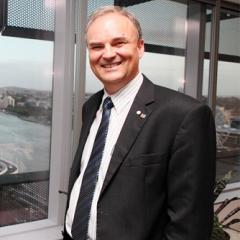In-situ electrochemical generation of chemicals from sewage as a method for sulfide control in sewer systems
Hydrogen sulfide generation in sewer pipes is a notorious problem that costs wastewater utilities billions of dollars each year globally. Existing chemical dosing strategies for sulfide abatement in sewers are expensive and often come with safety issues. Caustic, oxygen and iron salts are commonly used by the water industry. This project develops two novel chemical-free electrochemical methods for sulfide control in sewers. First method relies on the simultaneous production of caustic and oxygen from sewage and the second method relies on the use of iron as a sacrificial electrode for the continuous generation of Fe3+ in sewage with concomitant hydroxide generation by the reduction of water. Biofilm responses to both dosing strategies are also investigated.
Collaborators
- University of Gent
Project Outcomes
The key outcomes include:
- Demonstration of the in-situ efficient and scaling-free caustic and oxygen generation from sewage using a three-compartment electrochemical cell.
- Demonstration of the in-situ electrochemical ferric and alkalinity generation from sewage using a membrane-free electrochemical cell.
- A full-scale demonstration plant for in-situ electrochemical ferric and alkalinity generation for sulfide abatement is currently under construction and will be located at the Gold Coast, QLD, Australia.
Publications
Papers
- Lin, H.W., Couvreur, K., Donose, B. Rabaey, K., Yuan, Z. and Pikaar, I. (2017) Electrochemical production of magnetite nanoparticles for sulfide control in sewers. Environmental Science and Technology, accepted on Oct 13.
Lin, H. W., Lu, Y., Ganigué, R., Sharma, K. R., Rabaey, K., Yuan, Z. and Pikaar, I. (2017) Simultaneous use of caustic and oxygen for efficient sulfide control in sewers. Science of the Total Environment, 601-602: p. 776-783.
Lin, H. W., Kustermans, C., Vaiopoulou, E, Prévoteau, A., Rabaey, K., Yuan, Z. and Pikaar, I. (2017) Electrochemical oxidation of iron and alkalinity generation for efficient sulfide control in sewers. Water Research, 118: p. 114-120.
Lin, H.-W. Cejudo-Marín, R., Jeremiasse, A., Rabaey, K., Yuan, Z. and Pikkar, I. (2016) Direct anodic hydrochloric acid and cathodic caustic production during water electrolysis. Scientific Reports,6: 20494.
Lin, H-W, Rabaey, K., Keller, J., Yuan, Z. and Pikaar, I. (2015) Scaling-free electrochemical production of caustic and oxygen for sulfide control in sewers. Environmental Science and Technology, 49 (19): 11395-11402.
- Pikaar, I.; Rozendal, R. A.; Rabaey, K.; Yuan, Z. In-situ caustic generation from sewage: The impact of caustic strength and sewage composition. Water Res. 2013, 47 (15), 5828-5835.
Conference proceedings
- Lin, H-W.; Rabaey, K.; Keller, J.; Yuan, Z.; Pikaar, I. Simultaneous scaling-free electrochemical production of caustic and oxygen from domestic wastewater for sulfide control in sewers. The 66th Annual Meeting of the International Society of Electrochemistry, 2015, Taipei, Taiwan.
Project members
Other members
- Dr Ilje Pikaar
- Professor Korneel Rabaey

